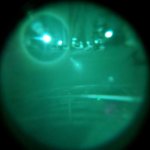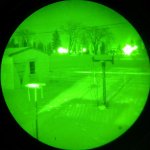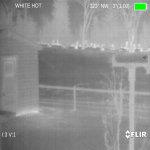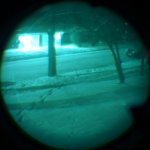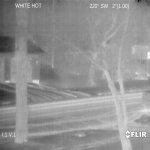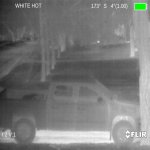*Part 2 begins on post #38. Really long winded, the TL;DR version is post 39. I've added the SiOnyx Aurora digital night vision camera to the test*
Well, I suppose it is time for my "annual" night vision review, rundown, and comparison. While this won't be particularly informative, me being an amatuer that really doesn't know much, it should hopefully be enlightening as to the capabilities of different types and "generations" of night vision. This years edition will be my most comprehensive yet. So, without further ado, shall we dive down the NOD rabbit hole...?
I will have to do this test in phases, as life has a knack of getting in the way of hobbies. So, bear with me, as this will likely be a winter long experience. I will show you how they perform in urban, open country, and bush settings, and hopefully the latter two in both moonlight and starlight conditions. Please feel free to suggest any areas you would like to see these tested.
First up, an introduction of the units:
Starting in the top left, purchased exclusively for this test, is an Armasight Orion riflescope. This is a 1st generation device with a 4x optical magnification. To the right of that is one that's been on my "must have" list for quite a while, a genuine PVS-4. Made in 1989, this unit may well have served in the first and/or second Gulf War. It is a 2nd generation device, and has a 4x magnification as well. These are quite good quality Gen 2 night vision. As shown in the picture, it uses a "reflex", or mirror lens. Next, bottom row, left, is an Armasight Sirius monocular. This is the cheapest Gen 2 that I've found in Canada. It has no magnification. Front row, middle, is the centre piece of my collection, my PVS-14. This is a 3rd Generation monocular, and is likely the most common type of night vision housing you will find in North America. It has no magnification. Last but not least, bottom right, is my new FLIR Breach. A compact thermal monocular, no magnification, with the latest FLIR thermal sensor, this unit will make this test/comparison very interesting, and highlight the fundamental differences between Image Intensifiers (I2, traditional night vision) and thermal imaging.
Something to keep in mind throughout, is that no camera will take as good an image as your eye will see through a night vision device. The FLIR Breach photos are taken by its own on board camera.

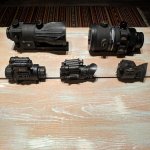
Well, I suppose it is time for my "annual" night vision review, rundown, and comparison. While this won't be particularly informative, me being an amatuer that really doesn't know much, it should hopefully be enlightening as to the capabilities of different types and "generations" of night vision. This years edition will be my most comprehensive yet. So, without further ado, shall we dive down the NOD rabbit hole...?
I will have to do this test in phases, as life has a knack of getting in the way of hobbies. So, bear with me, as this will likely be a winter long experience. I will show you how they perform in urban, open country, and bush settings, and hopefully the latter two in both moonlight and starlight conditions. Please feel free to suggest any areas you would like to see these tested.
First up, an introduction of the units:
Starting in the top left, purchased exclusively for this test, is an Armasight Orion riflescope. This is a 1st generation device with a 4x optical magnification. To the right of that is one that's been on my "must have" list for quite a while, a genuine PVS-4. Made in 1989, this unit may well have served in the first and/or second Gulf War. It is a 2nd generation device, and has a 4x magnification as well. These are quite good quality Gen 2 night vision. As shown in the picture, it uses a "reflex", or mirror lens. Next, bottom row, left, is an Armasight Sirius monocular. This is the cheapest Gen 2 that I've found in Canada. It has no magnification. Front row, middle, is the centre piece of my collection, my PVS-14. This is a 3rd Generation monocular, and is likely the most common type of night vision housing you will find in North America. It has no magnification. Last but not least, bottom right, is my new FLIR Breach. A compact thermal monocular, no magnification, with the latest FLIR thermal sensor, this unit will make this test/comparison very interesting, and highlight the fundamental differences between Image Intensifiers (I2, traditional night vision) and thermal imaging.
Something to keep in mind throughout, is that no camera will take as good an image as your eye will see through a night vision device. The FLIR Breach photos are taken by its own on board camera.


Attachments
Last edited:

















































